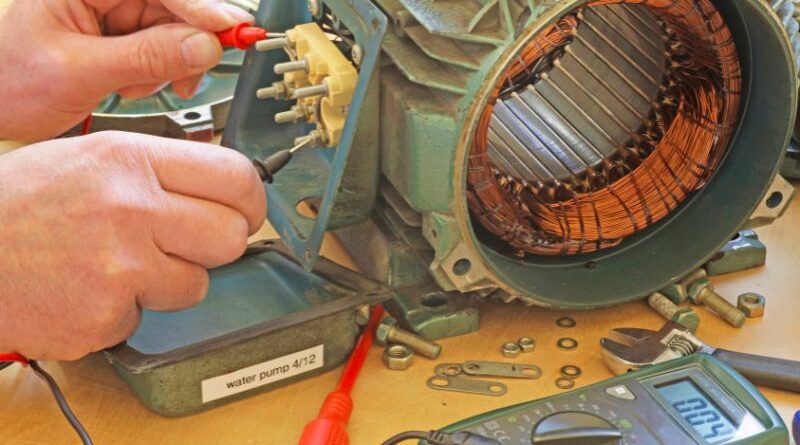
Highlighting the notable aspects of this engine
Here is some content highlighting the unique features of this engine:
- Known for its exceptional efficiency, the three-phase induction motor converts electrical energy into mechanical energy with minimal losses. This efficiency is crucial in industrial applications where energy conservation is a priority.
- These engines are known for their reliability. Thanks to their robust construction and the absence of brushes or commutators, they can be used in continuous operation even in harsh environments and are therefore suitable for demanding industrial environments.
- A notable feature of three-phase induction motors is their ability to produce high starting torque. This makes them ideal for applications that require high starting loads, such as pumps, compressors and conveying systems.
- High starting torque allows these motors to accelerate machines, efficiently achieving smooth and steady operation.
- Three-phase induction motors are available in different sizes and performance classes and are therefore very versatile. From small motors for household appliances to large motors for powering industrial machines, they can be scaled up or down as needed.
- Their versatility allows them to be used in a variety of industries and applications, including manufacturing, mining, water treatment, HVAC systems, and more.

Advantages of three-phase induction motors in industry

- Here are some key benefits
Efficiency
Three-phase induction motors are highly efficient, which is crucial for industrial operations. They convert electrical energy into mechanical energy with minimal losses. These motors have a high power factor and low current consumption, which reduces energy consumption and saves costs.
Reliability and durability
Induction motors are known for their robust construction and high reliability. They have a simple design, without brushes or commutators, which minimizes wear. This makes them suitable for continuous operation in harsh industrial environments where they can withstand high temperatures, dust and vibrations.
Starting torque
Three-phase induction motors, such as those used in conveying systems, pumps and compressors, can generate high starting loads. They provide an even and constant torque delivery, allowing machines to accelerate efficiently.
Variable speed control
Induction motors can be easily controlled to vary the operating speed. By using variable frequency drives (VFDs) or variable speed drives (ASDs), motor speed can be adjusted to meet load requirements, optimizing energy consumption and improving process control.
Cost effectiveness
Three-phase induction motors are economical compared to other motors. They have a relatively simple design, require minimal maintenance and have a longer service life. Furthermore, its wide availability and standardization result in competitive prices.
Scalability
Induction motors are available in a variety of industrial applications. They can be easily scaled up or down to meet specific requirements, providing flexibility in machine design and operation.
Due to these advantages, three-phase induction motors are very popular in the industry. They deliver efficient, reliable and cost-effective performance while being flexible and compatible with existing infrastructure.
Faraday's laws of electromagnetic induction
The first law states that when a conductor (e.g. a wire) intersects or is intercepted by magnetic field lines, an electromotive force (EMF) is induced in the conductor. Through the circuit. Mathematically, this can be expressed as follows:

EMF = -dΦ/dt
Where:
- EMF is the electromotive force (or induced voltage) in volts (V).
- dΦ/dt represents the rate of change of magnetic flux (Φ) through the circuit in relation to time
This law explains how relative motion between a conductor and a magnetic field can produce an electric current, as seen in devices such as generators and transformers.
- The closed Faraday circuit corresponds to the rate of change of the magnetic flux link in relation to time. The connection of the magnetic flux (Λ) (N) and the magnetic flux flowing through each turn (Φ). Mathematically, this can be expressed as follows:
EMF = -dΛ/dt
Where:
- EMF stands for electromotive force or induced voltage in volts (V).
- dΛ/dt represents the rate of change of the magnetic flux connection (Λ) in relation to time
This law clarifies the relationship between the change in magnetic flux coupling and the voltage induced in a circuit. It helps explain self-induction and mutual induction, which are essential for the operation of devices such as inductors and transformers.
Faraday's laws of electromagnetic induction have far-reaching implications and form the basis for numerous technological applications, including power generation, transformers, motors, and electromagnetic devices. These laws provide a deep understanding of the relationship between electricity and magnetism and shape the field of electromagnetism and its practical applications.
Merits
-
The construction is simple and robust.
-
It is comparatively cheap.
-
It's very low maintenance.
-
The efficiency is high and the power factor is good
-
Has automatic starting torque
Disadvantages
Here are the disadvantages of three-phase induction motors

-
The engine speed is constant and it is simply not possible to change the rate.
-
Its starting torque is less than this DC shunt motor
-
Lower power factor at light load
-
Limited speed control range
-
Reduced efficiency at low load
-
Starting the current outbreak
-
Lack of precise speed control
-
Harmonic distortion
-
Rotor winding maintenance
-
Lower starting torque when stopped
These points describe the main disadvantages of three-phase induction motors and provide a concise overview of their limitations.

